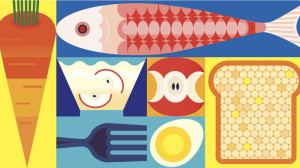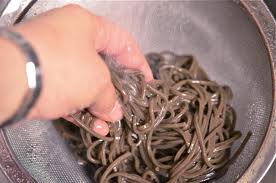
Cauliflower, It’s the Real Deal!
I know you have heard it over and over, “Eat your vegetables, they are good for you” Still, some folks try as they might , can’t seem to get past the basic salad or a couple of broccoli stems before calling the it quits… I am here today to ask you to take another look at Cauliflower. Perhaps after reading this you will have a new prospective on this deliciously healthy sweetheart of the veggie world. Of course I included a link to an easy, quick recipe that is inexpensive, makes a good size batch and it tastes delish! Now let’s move on to the real deal about Cauliflower.
Cauliflower is one of several vegetables in the species Brassica oleracea, in the family Brassicaceae. Typically, only the head (the white curd) is eaten, although the leaves are also edible and deliciously mild. Its name is from Latin caulis (cabbage) and flower.
Health Benefits
While cauliflower is not a well-studied cruciferous vegetable from a health standpoint, you will find several dozen studies linking cauliflower-containing diets to cancer prevention, particularly with respect to the following types of cancer: bladder cancer, breast cancer, colon cancer, prostate cancer, and ovarian cancer. This connection between cauliflower and cancer prevention should not be surprising, since cauliflower provides special nutrient support for the body systems. Chronic imbalances in any of the body’s systems can increase risk of cancer, and when imbalances in all three systems occur simultaneously, the risk of cancer increases significantly. Keep in mind that these cancer prevention studies are still in their infancy, however show great promise.
Cauliflower’s incredible Anti-inflammatory Benefits
The anti-inflammatory nature of glucosinolate/isothiocyanate and other nutrients found in cauliflower has been the basis for new research on inflammation-related health problems and the potential role of cauliflower in their prevention. Promising research is underway that many health professional feel will shed light on the potential benefits of cauliflower in relationship to our risk of the following inflammation-related health problems: Crohn’s disease, inflammatory bowel disease, insulin resistance, irritable bowel syndrome, metabolic syndrome, obesity and rheumatoid arthritis
Another reason to show a little love to Cauliflower: Scientists have not always regarded cardiovascular problems as having a central inflammatory component. However what is clear is the role of unwanted inflammation in creating problems for the blood vessels and circulation. The anti-inflammatory support provided by cauliflower makes it a food also capable of providing cardiovascular benefits. Of particular interest is its glucoraphanin content. Glucoraphanin is a glucosinolate that can be converted into the isothiocyanate (ITC) sulforaphane. Not only does sulforaphane trigger anti-inflammatory activity in our cardiovascular system—it may also be able to help prevent and has the potential to assist in the reversal of blood vessel damage.
Cauliflower gets props for Digestive Support
The fiber content of cauliflower—over 9 grams in every 100 calories—makes this cruciferous vegetable a great choice for digestive system support. Yet the fiber content of cauliflower is only one of its digestive support mechanisms. Researchers have determined that the sulforaphane made from a glucosinolate in cauliflower (glucoraphanin) can help protect the lining of your stomach. Sulforaphane provides you with this health benefit by preventing bacterial overgrowth of Helicobacter pylori in your stomach or too much clinging by this bacterium to your stomach wall.
Cauliflower is has Super Hero Detox Power
The detox support provided by cauliflower includes antioxidant nutrients to boost Phase 1 detoxification activities and sulfur-containing nutrients to boost Phase 2 activities. Cauliflower also contains phytonutrients called glucosinolates that can help activate detoxification enzymes and regulate their activity. Three glucosinolates that have been clearly identified in cauliflower are glucobrassicin, glucoraphanin, and gluconasturtiian. While the glucosinolate content of cauliflower is definitely significant from a health standpoint, cauliflower contains about one-fourth as much total glucosinolates as Brussels sprouts, about one-half as much as Savoy cabbage, about 60% as much as broccoli, and about 70% as much as kale.
A high intake of cauliflower has been associated with reduced risk of aggressive prostate cancer.[16]
Cooking
Cauliflower can be roasted, boiled, fried, steamed, or eaten raw. Steaming or microwaving better preserves anticancer compounds than boiling. When cooking, the outer leaves and thick stalks are removed, leaving only the florets. The leaves are also edible, but are most often discarded. The florets should be broken into similar-sized pieces so they are cooked evenly. After eight minutes of steaming, or five minutes of boiling, the florets should be soft, but not mushy (depending on size). Stirring while cooking can break the florets into smaller, uneven pieces.
Boiling reduces the levels of these compounds, with losses of 20–30% after five minutes, 40–50% after ten minutes, and 75% after thirty minutes. However, other preparation methods, such as steaming, microwaving, and stir frying, have no significant effect on the compounds.
Here is a recipe I have been making for 25 years now, and still it is one of my all time faves! Recipe: Carol’s Cauliflower Soup
The Nutritional Skinny (per 100 g/ 3.5 oz)
Energy 104 kJ (25 kcal)
Carbohydrates 5 g
Dietary fiber 2 g
Protein 1.9 g
Water 92 g
Thiamine (vit. B1) 0.05 mg (4%)
Riboflavin (vit. B2) 0.06 mg (5%)
Niacin (vit. B3) 0.507 mg (3%)
Vitamin B6 0.184 mg (14%)
Folate (vit. B9) 57 mg (14%)
Vitamin C 48.2 mg (58%)
Vitamin E 0.08 mg (1%)
Vitamin K 15.5 μg (15%)
Calcium 22 mg (2%)
Iron 0.42 mg (3%)
Magnesium 15 mg (4%)
Manganese 0.155 mg (7%)
Phosphorus 44 mg (6%)
Potassium 299 mg (6%)
Zinc 0.27 mg (3%)
Sources:
http://www.cancer.gov/cancertopics/factsheet/diet/cruciferous-vegetables
http://www.webmd.com/diet/features/cauliflower-health-boost
http://en.wikipedia.org/wiki/Cauliflower





